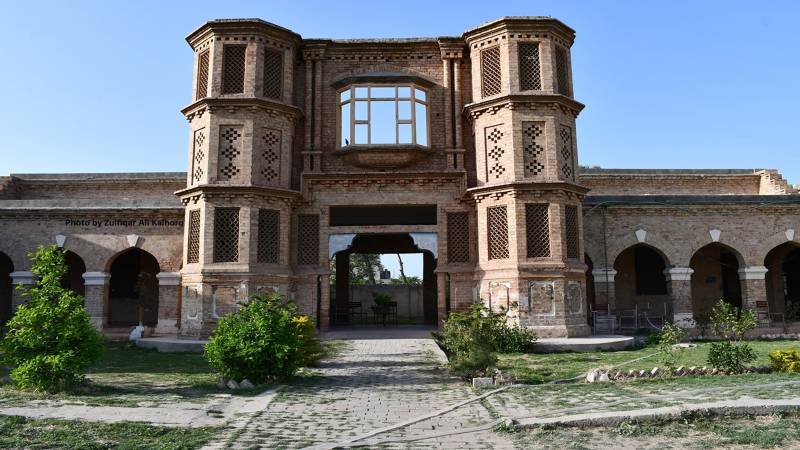
The pre-partition Arya High School, where now the Law Department of University of Chakwal operates, is the most impressive pre-Partition building in Chakwal City. Chakwal is home to a few pre-Partition schools built by Muslims, Sikhs, and Hindus. The Sikhs built several schools in Chakwal, while Muslims and Hindus also built a few. Nabeel Anwer Dhakku, a noted journalist of Chakwal, has written several articles on the forgotten pre-Partition buildings in Chakwal. According to him, Qazi Ghulam Nabi and his nephew Qazi Ghulam Rabbani laid the foundation of Islamia Primary School in 1922.
The Sikhs of Chakwal built many schools in Chakwal, of which the most prominent one included Sant Singh (SS) Khalsa School, now known as Government High School No 1. The Hindus of Chakwal also built school with donations from wealthy persons from the community. This school, known as Arya High School, was built in 1933 and attested by a donor plaque.
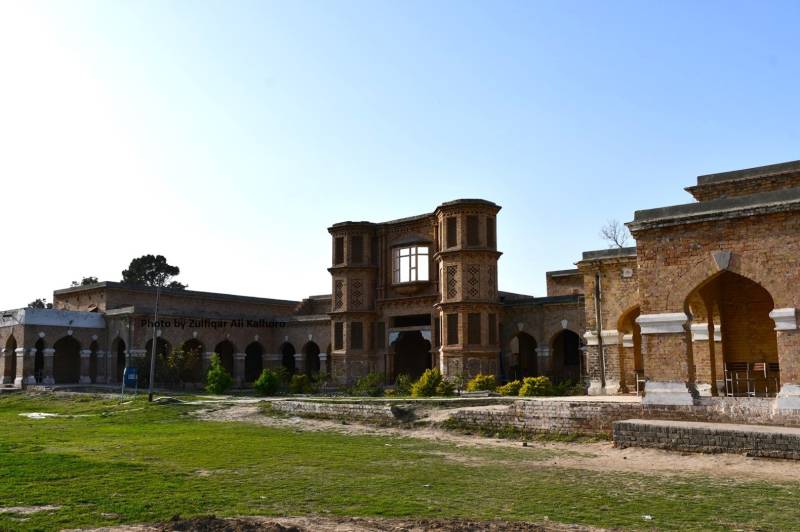
In 2022, I visited the old building of the former Arya High School with Ali Khan, a journalist, and Shahid Azad, head of the English department at Government Graduate College Chakwal. The former Arya High School building is located on the premises of University of Chakwal, formerly Government Postgraduate College Chakwal, which was built in 1949. The former Arya High School's grand portal reflects the British era's architecture in Punjab. It is noted for brick ornamentation, a scheme of decoration found in most of the buildings built during the British era in the Punjab. The portal's facade is adorned with Jharokha, which has now lost its original beauty.
The school had 13 classrooms and 12 rooms in an adjacent hostel. Students from far-flung areas of the former Jhelum district used to stay in the hostel. Rooms on the upper storey also existed but do not exist now.
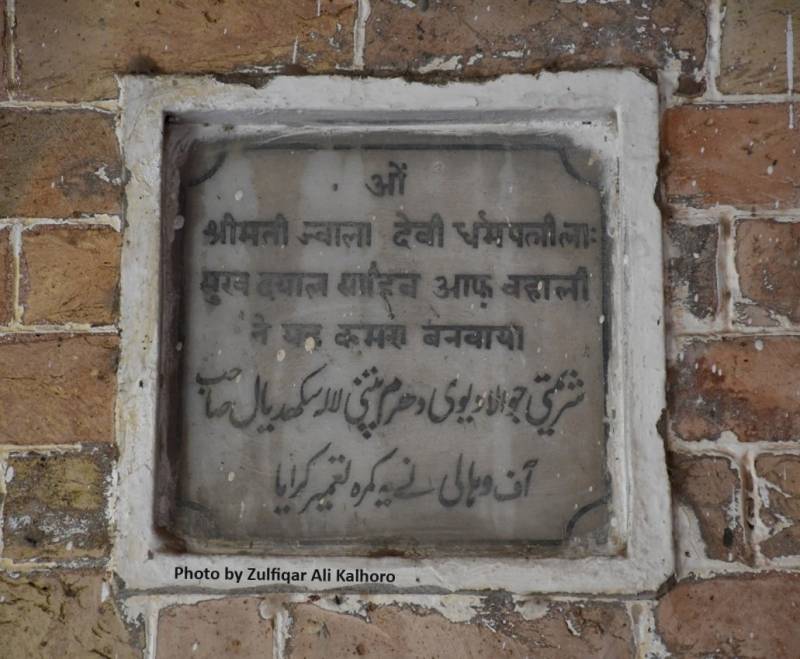
There are eight donor plaques, written in Urdu, Hindi, and English, on the walls of the school’s verandas and four on the walls of the hostel building, which provide valuable information about the donors' surnames and native places in the then-Jhelum district (now part of Chakwal district). Most of the donors were the residents of Chakwal town, while three donors were from Chawli and Vahali villages.
The first and main donor plaque, written in English, reads that the two famous timber merchants of Chakwal Bir Chand and Gyan Prakash, sons of Bakhshi Prab Dyal Jaggi, built it (school) in memory of their grandfather Bakhshi Kesar Mal Jaggi in April 1933. Both the brothers laid the school's foundation, and later, other Hindu residents of Chakwal and other villages joined them in expanding it. The second donor plaque, also written in English, bears that the office room was built in memory of Uggar Sain Sabharwal (former student of this school (Arya High School) who died in the Quetta earthquake on 31 May 1935 by his father, Kishan Chand Sabharwal of Chakwal.
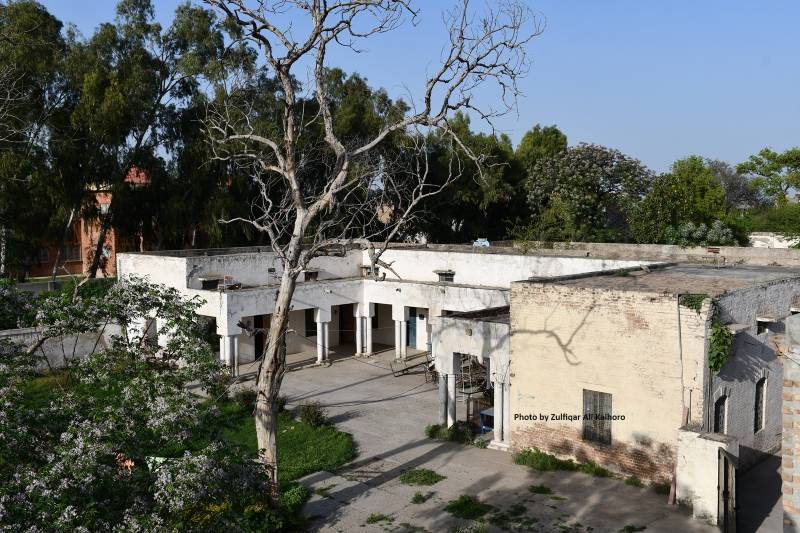
The third donor plaque, written in Hindi and Urdu, shows that the classroom in the school was built in memory of Munshi Bhagwan Dass Ji, who died on 25-3-1930, by his wife, Shrimati Bhagwanti, and sons Messrs Chuni Lal Narain Dutt, Chander Bhan, and Sattya Dev. The fourth donor plaque, written in English and Urdu, indicates that in 1933, Lala Ram Chand and Doctor Sita Ram built a classroom in memory of their beloved father, the Late Lala Ishar Dass Sethi of Chakwal. These donor plaques are fixed on the outer walls of the classrooms. The fifth donor plaque, written in Urdu, reads that a room was built in memory of Buta Mal Behal and his wife Ameer Devi by their sons Lala Kanshi Ram, Ishar Dass, Shri Ram and Roshan Lal.
Apart from Chakwal town residents, notables of Chawli and Vahali villages also built rooms in Arya High School. The sixth plaque shows the name of Lieut. Kirpa Ram who built a room in memory of his father, Sardar Thakur Dass Jauhar, of Vahali village, a famous village of Sikh Sardars. The seventh donor plaque bears that Sardar Anokh Rai Seth of Chawli built a room in memory of his son, B Yag Datta, who died on 20-1-1931.
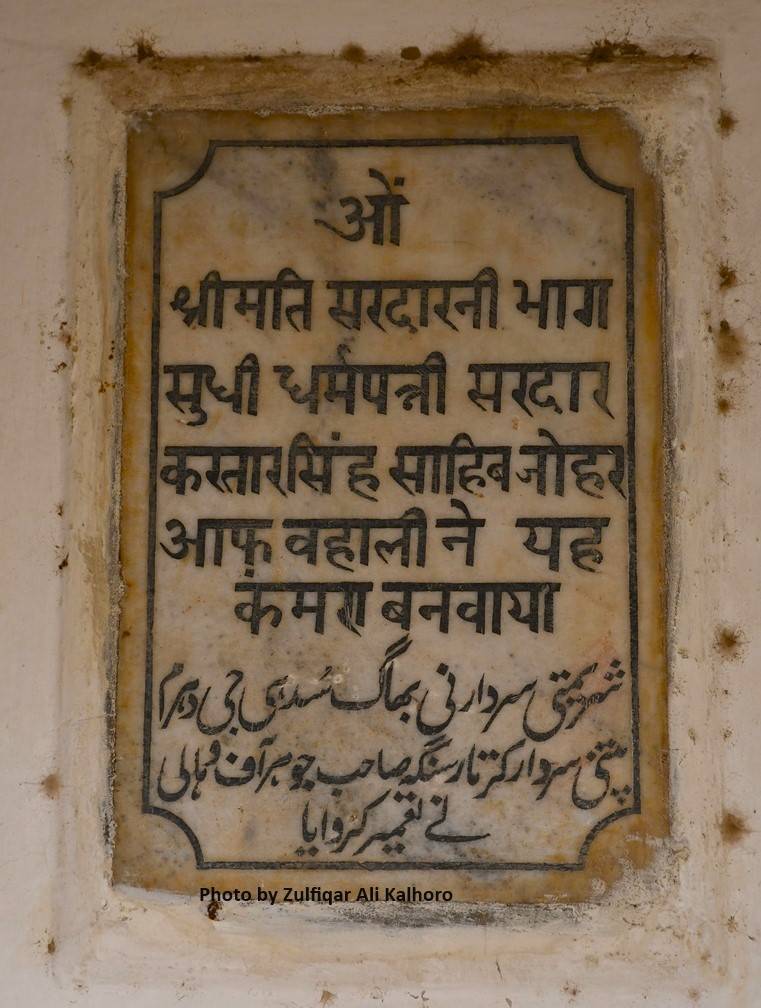
Like their male counterparts, Chakwal's females generously donated to welfare work. The eighth donor plaque bears the name of Shrimati Jawala Devi, who was known for her philanthropic work in Chakwal. I wrote an article on her welfare activities in the Friday Times ‘Generosity Of Chakwal's Notable Women: The Works Of Shrimati Jawala Devi Of Vahali, which appeared on 2 November 2023. She was the wife of Lala Sukhdayal of Vahali.
Shrimati Jawala Devi also built a room at Arya High School. She also built a female ward in Chakwal town. A memorial at District Headquarters (DHQ) Hospital in Chakwal carries all the plaques of the donors who donated to expand the hospital. The donor plaque of Shrimati Jawala Devi of Vahali is also fixed on this memorial or monument. There is an Urdu inscription on the top of the donor plaque, followed by English, Hindi, and Gurmukhi, respectively. It reads that the building (i.e. the Women's Hospital) was built by Shrimati Jawala Devi, wife of Lala Sukh Dayal of Vahali, in May 1940.
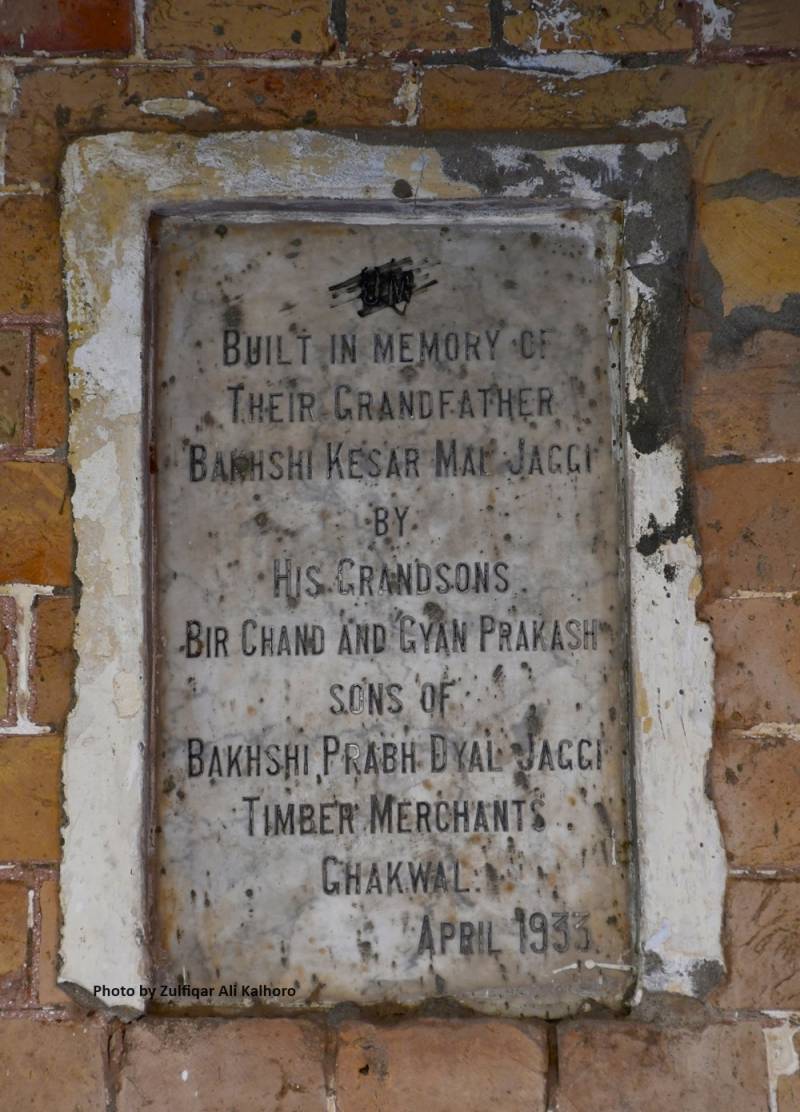
Apart from the Arya High School building, four donor plaques are found on the veranda walls of the hostel building, which is believed to have been built with donations by Hindu residents of Chakwal and a Sikh woman from Vahali. The first donor plaque in the hostel bears the name of Shrimati Sardarni Bhag Sudhi Ji, wife of Sardar Kartar Singh Jauhar of Vahali, who built a room there.
The second donor plaque shows bears that Utam Chand and Malik Ram built a room in memory of their mother, Shrimati Jamna Devi, wife of Chet Ram Kohli. The third donor plaque in the hostel building reads that this memorial (room) was built for Dahropati Devi, wife of Munshi Nanak Chand Dhon of Chakwal, by her sons Lala Charanjit, Badrilal and Ram Chand. The fourth donor, written in Hindi, bears that the room was built by Shrimati Parvati Ji in memory of her husband, Lala Makha Shah Kapur Ji, in Vikram Samvat 1996/1939 AD.
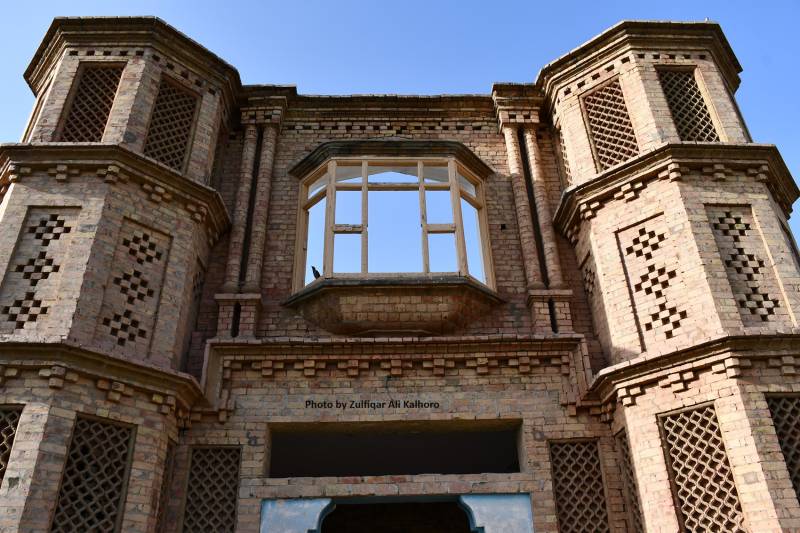
The former Arya High School building is one of the few surviving structures of pre-Partition Chakwal that needs to be preserved before it becomes history. Preserving the building and donor plaques will enlighten future generations about the role and significance of philanthropy in building institutions for the benefit of communities.

